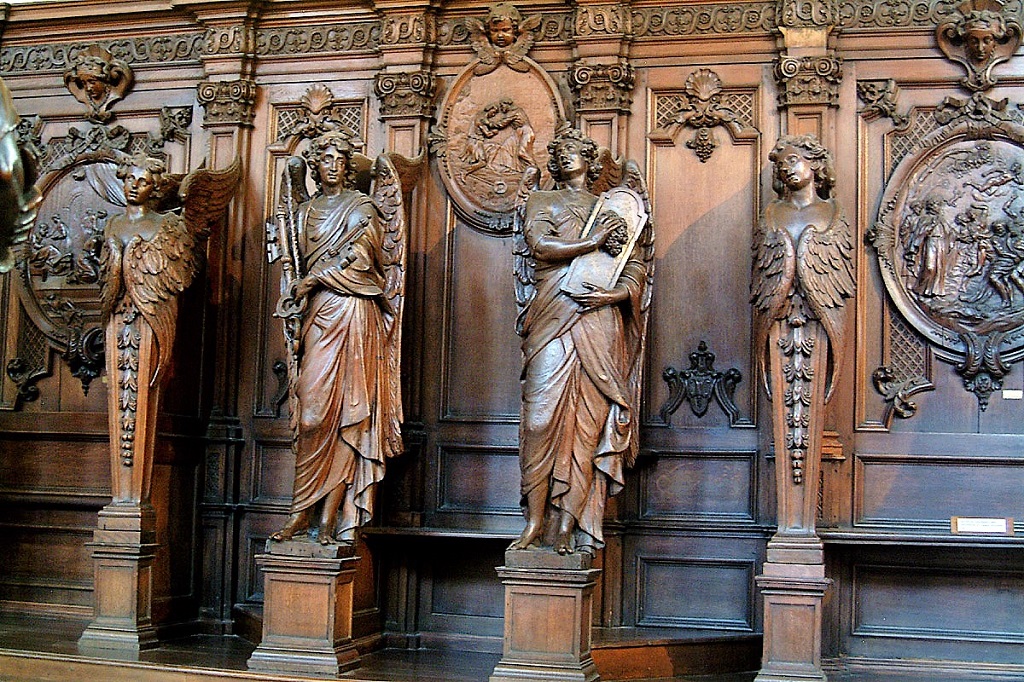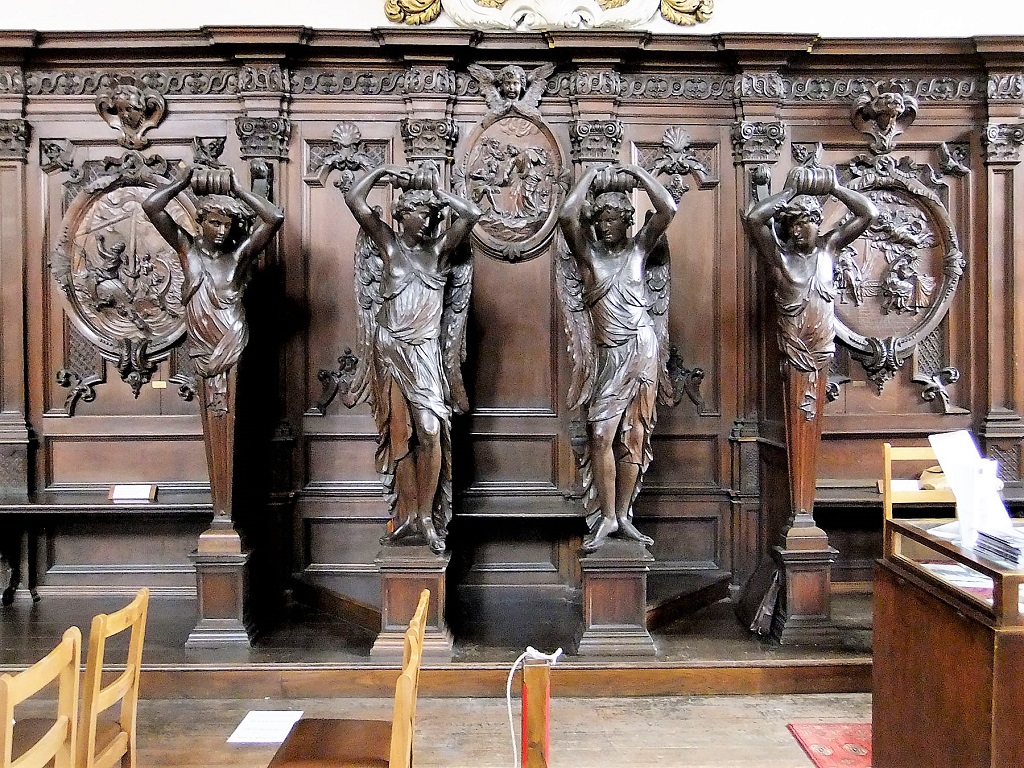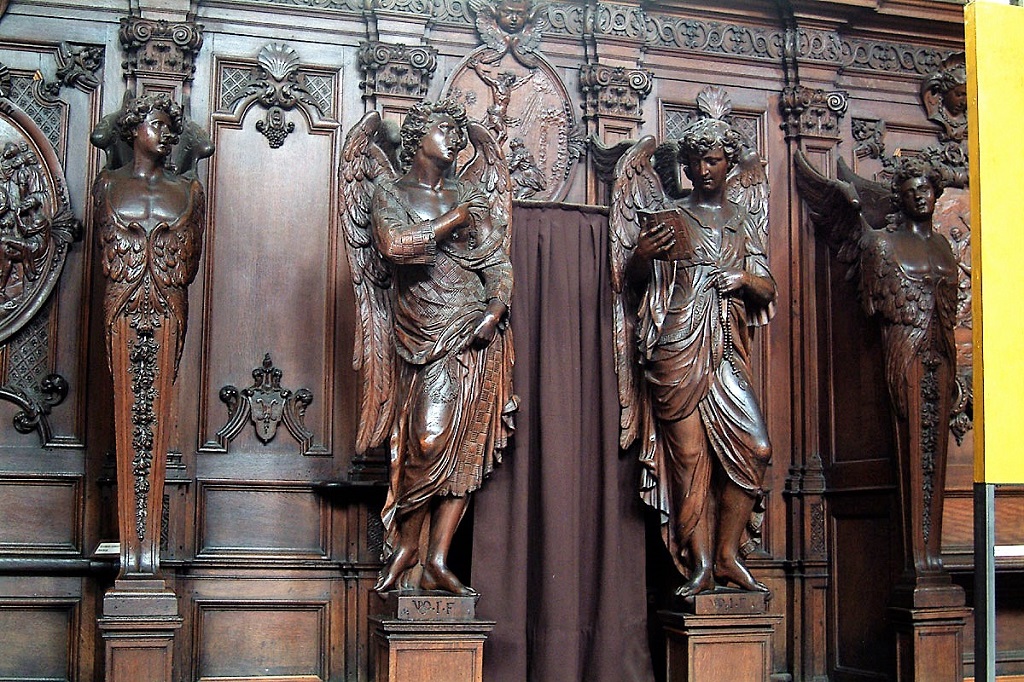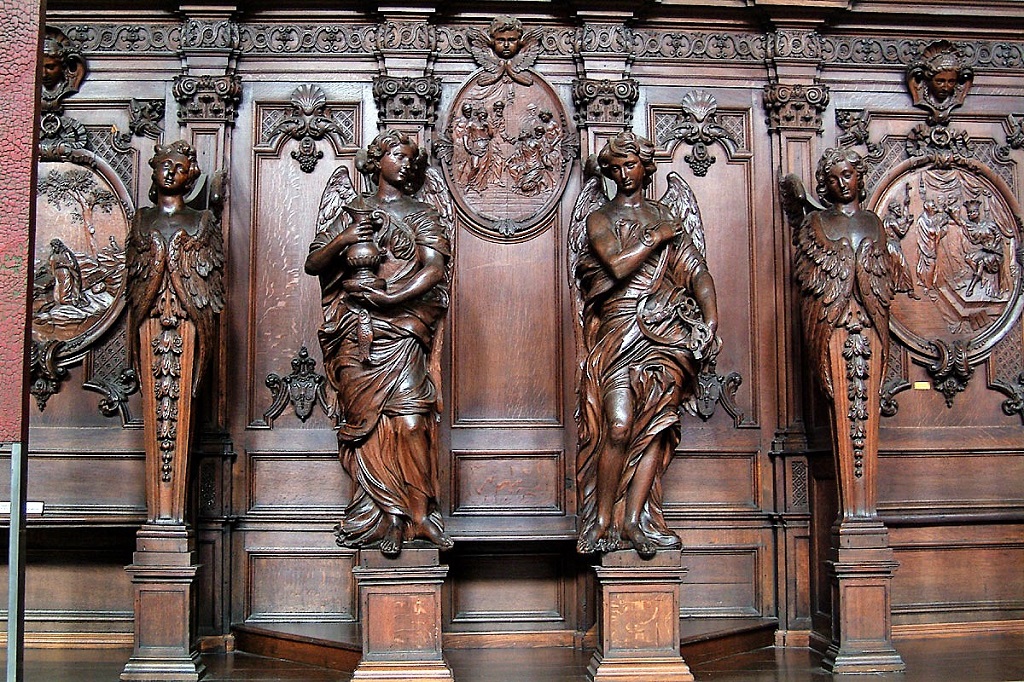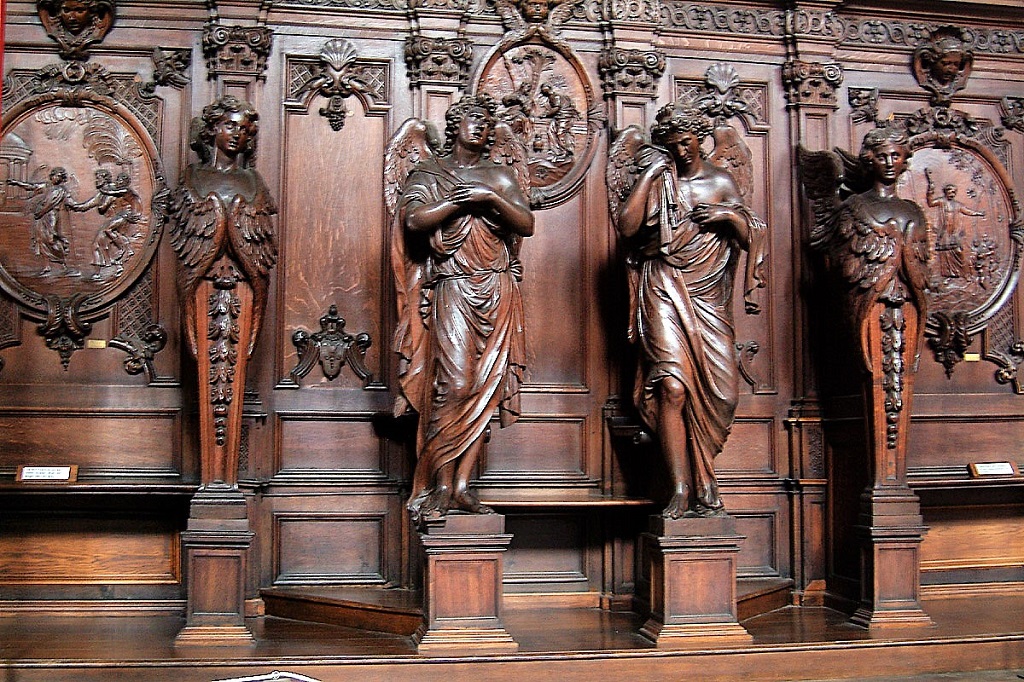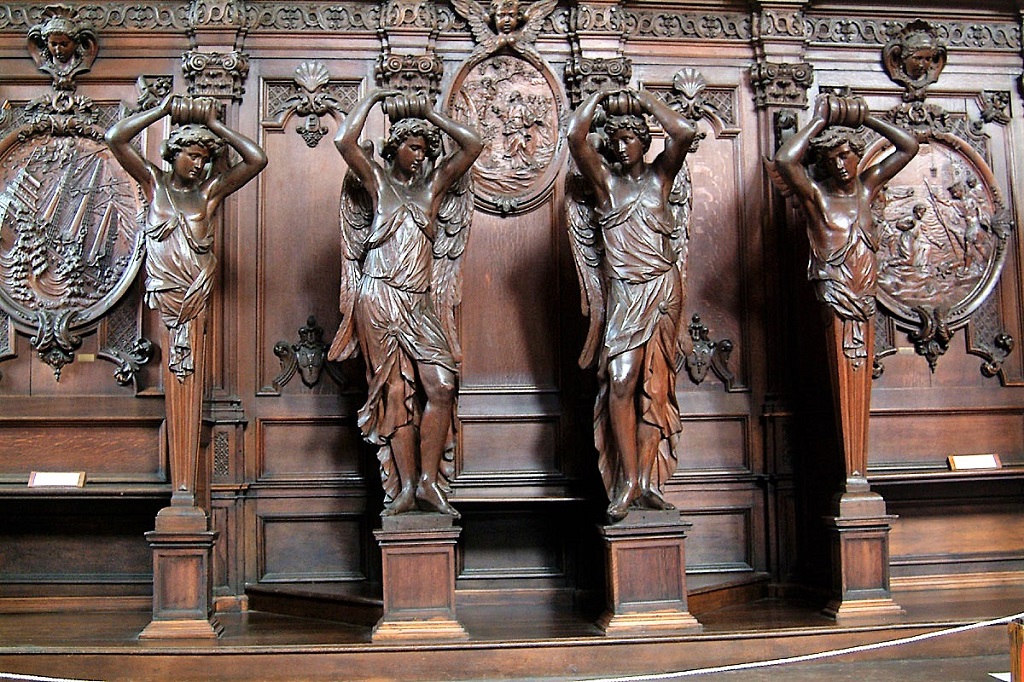The Antwerp jesuit church, a revelation.
The confessionals
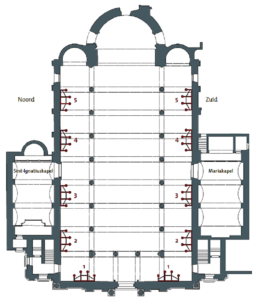 When a relationship wants to be genuine, it will seek harmony and balance. A relationship is in danger when one of the partners finds it easy to demand too much attention for himself. Since we are humans – of whom “The spirit is willing, but the flesh is weak” (Mth. 26:41) – our relations are very vulnerable. The only way to repair a rift in a relationship is to ask for forgiveness… and get it.
When a relationship wants to be genuine, it will seek harmony and balance. A relationship is in danger when one of the partners finds it easy to demand too much attention for himself. Since we are humans – of whom “The spirit is willing, but the flesh is weak” (Mth. 26:41) – our relations are very vulnerable. The only way to repair a rift in a relationship is to ask for forgiveness… and get it.
Forgiveness is not an individual inner feeling, but an explicit effect that is given by the other. What is more beautiful than real reconciliation between partners?
Also in our relations with God the best thing to do is to ask for forgiveness for our mistakes, our sins. For this Catholic Christians know the sacramentIn Christianity, this is a sacred act in which God comes to man. Sacraments mark important moments in human life. In the Catholic Church, there are seven sacraments: baptism, confession, Eucharist, confirmation, anointing of the sick, marriage and ordination. of reconciliation: confessionThe sacrament of reconciliation. The believer [or penitent] confesses his / her shortcomings to a priest [the confessor] and expresses his / her regret. On behalf of God the priest grants forgiveness [absolution] and imposes a form of penance. This may include several prayers, an order to reconcile with the other party or, in the past, sometimes a pilgrimage.. A penitent confesses his sins to a priestIn the Roman Catholic Church, the priest is an unmarried man ordained as a priest by the bishop, which gives him the right to administer the six other sacraments: baptism, confirmation, confession, Eucharist, marriage, and the anointing of the sick., the confessor, who grants forgiveness in the name of Christ: “Whose sins you forgive they are forgiven them” (John 20:23). Because the priest explicitly says that your mistakes have been forgiven, you know that there is a real effect; it is more than just a good feeling. What is more beautiful than a reconciliation between partners? “We implore you on behalf of Christ, be reconciled to God” (2 Cor. 5:20)
To support the private character of the conversation of confession, the CouncilA large meeting of ecclesiastical office holders, mainly bishops, presided by the pope, to make decisions concerning faith, church customs, etc. A council is usually named after the place where it was held. Examples: the Council of Trent [1645-1653] and the Second Vatican Council [1962-1965], which is also the last council for the time being. of Trent (1545-1563) created a new piece of furniture: the confessionalA piece of furniture that was especially designed to facilitate the sacrament of confession, especially by avoiding that confessor and penitent come face to face. To the left and right are kneeling pews for penitents; in the middle is a small booth where the confessor sits. Both are separated from each other by a partition with a grid, so that the confessor can hear the penitent, but cannot see him / her.. Kneeling humbly the penitent uses this body language to express his remorse. The priest, who is sitting in the centre, listens sideways to one penitent after the other. By not looking the conscience-stricken person straight into the eyes free conversation is stimulated; tactful psychology a few centuries before Freud’s sofa talks…
The great number of confessionals in this church of a religious orderOrganisation of unmarried women or men who want to live in community to devote themselves to religious life. They follow the rule of their founder: e.g., Augustine, Benedict, Norbert, Francis, Dominic, Ignatius, … When joining the Order, members take three vows: obedience (to the superior), poverty (no personal possessions) and purity (no physical relationship). met a particular need. There was such a great surge for confession – in EasterThe feast that celebrates the resurrection of Jesus on the 3 day after his death on the cross. This means that Jesus lives on despite his death. This feast is celebrated on the 1 Sunday after the 1 full moon of spring. time sometimes up to 4,000 penitents a day – that to the 14 confessionals on the ground floor, 6 more were added on the galleries for the confession of men. It can be understood that people prefer confessing things that cannot bear the light of day anonymously to some fatherPriest who is a member of a religious order., rather than telling this to their familiar parish priestA priest in charge of a parish.. The confessionals in the aisles, attributed to Jan Pieter I Van Baurscheit (ca. 1720), are part of the wainscoting. Initially there were 10 of them. Now there are only 8, of which 6 are original (and of which only one is being used).
It goes without saying that the subject matters of the figurative representations concern confession, and so the battle between good and evil, and the successive stages of sin, remorse, forgiveness and penance. The angel herms at the exteriors are of no importance at all, contrary to the two angels (E) with attributes, in the centre (l: left and r: right). In the oval medallion (M) on top of the priest’s booth scenes from the New TestamentPart of the Bible with texts from after the birth of Jesus. This volume holds 4 gospels, the Acts of the Apostles, 14 letters of Paul, 7 apostolic letters and the Book of Revelation (or Apocalypse). deal with remorse, conversion or reconciliation. Traditional characters are Mary Magdalene, Peter, the Samaritan woman and the prodigal son.
The confessionals in the southern aisle
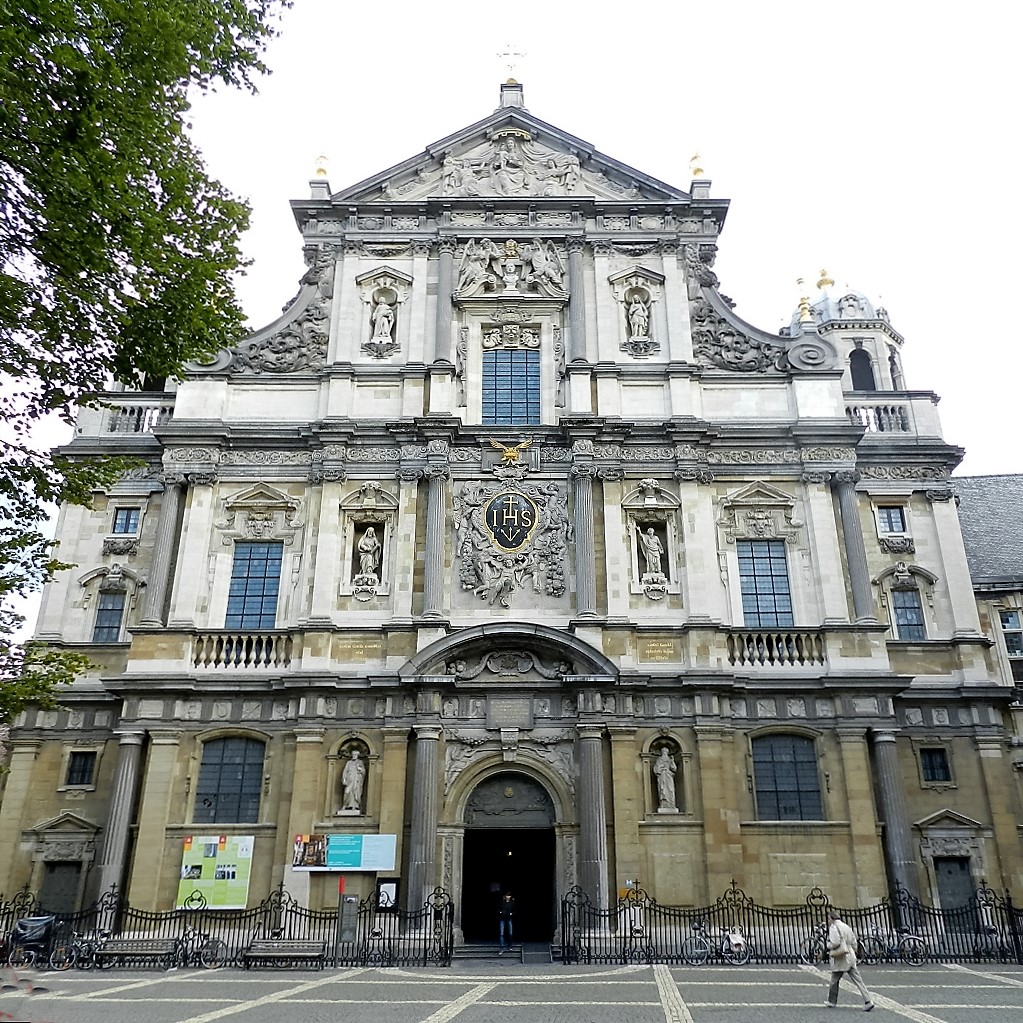
| south 5 | The longing “to inherit eternal life” (Lc. 10:25c), confirmed by the awareness of one’s own transitoriness, may stimulate you to do as much good as possible in your lifetime, like for instance the good Samaritan. Therefore, SaintThis is a title that the Church bestows on a deceased person who has lived a particularly righteous and faithful life. In the Roman Catholic and Orthodox Church, saints may be venerated (not worshipped). Several saints are also martyrs. Ignatius advises everybody to regularly contemplate his or her own moment of dying. |
| angels | The spade of the gravedigger, bones and a skull out of which a worm is crawling! |
| medallion | The good Samarian (Lc. 10:25-37), caring for a wounded man (v.33) recommends charity as the best way to inherit eternal life(v.25c) |
| south 4 | Sins can be forgiven heartily. |
| angels | The keys illustrate the ‘key power’ that Jesus gave to the Church to forgive sins (Mth. 16:19 in combination with John 20:23). The same angel shows a tally stick, while the angel at the other end cleans a slate with a sponge. How beneficent is God’s forgiveness: however much you may have on your slate, it can be sponged off so that you can start again with a clean slate! Which visitor would not stand still at the value of reconciliation and – why not? – heave a sigh of relief? |
| medallion | The prodigal son (Lc. 15:11-23). The merciful father embraces his son, who has come back (v.20): this son of mine was dead, and has come to life again; he was lost, and has been found (v.24ab). |
| south 3 | Jesus’ bitter passion and death (to carry away our sins) may stimulate our remorse over our own mistakes. This suffering was even more painful for Jesus because Peter denied hem, although afterwards he showed repentance. |
| angels | A few tools of the passion, such as the lance and the hyssop stalk, Veronica’s veilHeadgear worn by female religious. Until the Second Vatican Council, all nuns wore wimples, which covered the entire hair and neck. Nowadays, the veil is usually worn on the hair. and the crown of thorns remind us of Jesus’ voluntary sacrifice until death. In this way, he has definitively broken the power of evil and so he has brought about reconciliation between God and man. |
| medallion | Peter’s repentance (Lc. 22:62): and he began to weep bitterly. |
| south 1 | the confessional against the western wall has disappeared. |
| medallion | Paul’s conversion (Acts 9:1-19): confession as an impulse for a profound change in life. |
The confessionals in the northern aisleLengthwise the nave [in exceptional cases also the transept] of the church is divided into aisles. An aisle is the space between two series of pillars or between a series of pillars and the outer wall. Each aisle is divided into bays.
| north 5 | Repentance, stimulated by prayer |
| angel, right | Prayer: On the seam of the cloak: “Fili, pecc[asti], non adjicias iterum; sed et de pristinis deprecare, ut tibi dimittantur. Eccl. 21” (My son, if you have sinned, do so no more, and for your past sins pray to be forgiven; Sir. 21:1). The small rosary supports this incitement for prayer. The answer is not long in coming: the angel reads quotes from two penitential psalms:
The foot bears the inscription “PVBIF” [PetrusHe was one of the twelve apostles. He was a fisherman who, together with his brother Andrew, was called by Jesus to follow Him. He is the disciple most often mentioned In the Gospels and the Acts of the Apostles. His original name was Simon. He got his nickname Peter (i.e. rock) from Jesus, who, according to tradition, said that He would build His Church on this rock. Van Baurscheit invenit, fecit] (… has designed and executed this). |
| angel, left | Penitence. The weeping angel is wrapped up in a (coarse) hair shirt and flogs himself with two scourges. On the seam of his mantle there is the incitement from Rom. 6:19: “sicut [enim] exhibuistis membra vestra servir[e immunditiae et iniquitati, ad iniquitatem,] ita nunc [?] ex[h]ibite membra vestra servire justitiae” (just as you presented the parts of your bodies as slaves to impurity and to lawlessness for lawlessness, so now present them as slaves to righteousness for sanctification). |
| medallion | Mary Magdalene, the ‘public sinner’ at the crucified Christ. |
| north 4 | Moderation, trained in LentThis is the period of preparation for Easter. It begins on Ash Wednesday and ends on the Saturday before Easter. Without the six Sundays of Lent, there are 40 days in which Christians are expected to live more austerely. The last week of Lent is called Holy Week., gives backbone in cases of greater temptations, such as adultery. |
| angel, left | Moderation: keeps the reins in his hand, as well as a horse’s bit to control (one’s urges). |
| angel, right | Lent and Purification: fish and a jar of water as sober food. Moreover, the fish, which takes in food through its gills, is a symbol of moderation itself; the water is symbol of moral purification. |
| medallion | By his answer “Let the one among you who is without sin be the first to throw a stone at her” Jesus saves the woman taken in adultery from any kind of sentence. What He does do, is encourage her not to sin any more (John, 8:3-11). |
| north 2 | |
| angels | caryatid busts of angels (Jan-Baptist I Van Hool, beginning 19th century; as in South 2). |
| medallion | Zacchaeus, the extortioner who gets expelled, wants to be straightened out (Lc. 19:1-10). In this we see two important aspects of reconciliation: the will to make up the evil one has caused by giving compensation to the victims (v. 8) ànd the joy because of the contact regained and of having been pardoned by Jesus (v. 10). |
| north 1 | The confessional against the west wall has disappeared. |
| medallion | circular, from a different series (?): Jesus chases the merchants from the Temple (John 2:14-22) |
If ever you visit Saint Peter’s Church in Turnhout and you have the impression of recognizing a few of these angels at the confessionals, you need not be surprised: they are exact copies indeed.


